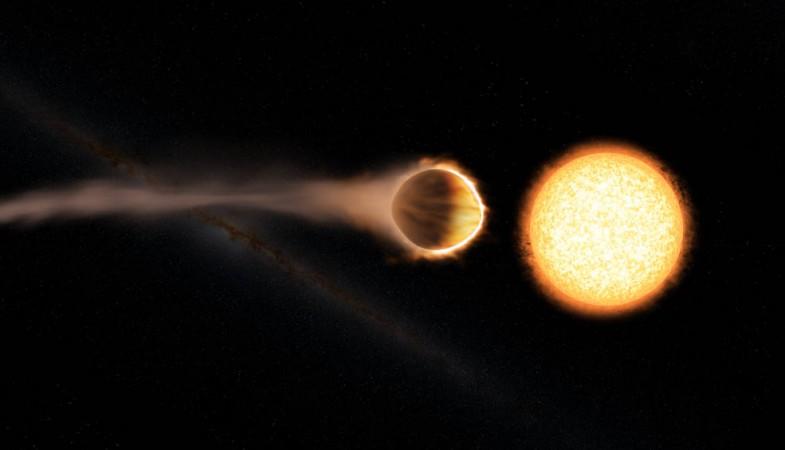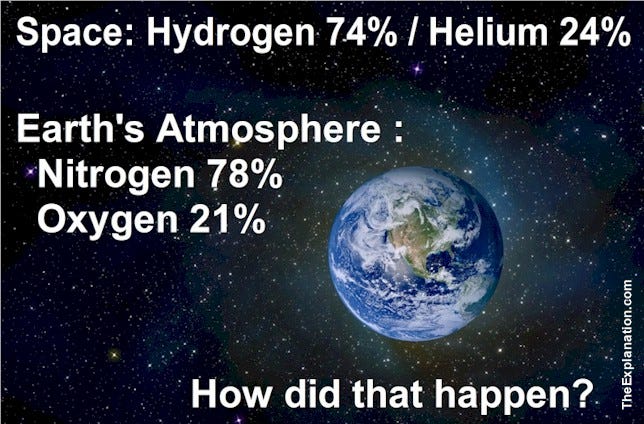Helium In Space
$ begingroup$ Thanks, Anthony. I suspect that the boiling points of the two gases are just too close, meaning that the partial pressure of N2 relative to O2 in an N2/O2 gas mixture at cryogenic temperatures is too low for N2 to be an efficient pressurant.
SHOOT -- Superfluid Helium On-Orbit Transfer
The Cryogenics & Fluids Branch has developed a practical application the fountain effect, a superfluid helium pump. After testing on the ground, the pump flew in the space shuttle as the Superfluid Helium On Orbit Transfer (SHOOT) project. The thermomechanical pump is basically a fountain effect demostration, except that the helium flow, rather than spouting out through a small hole, goes instead through a tube that leads into another storage dewar. SHOOT flew on the space shuttle mission STS-57 in June, 1993.



- When the liquid helium reaches the outside surface of the plug, that is, the surface exposed to the vacuum of space, it evaporates. As it evaporates it cools. To the 'cool' helium on the outside surface of the plug, the 'warm' helium inside the dewar now looks like a hot spot.
- Helium is the second-most abundant element in the known universe, but it’s hard to capture on Earth because of how easily it floats out of the atmosphere and into space. Oil companies harvest.
The porous plugs used in SHOOT were manufactured by Coors, a company which has been making porous filters for many years. Lately, they have branched out as a manufacturer of dilute ethanol solutions, which they filter by pumping them through their own porous filters.
The thermomechanical pump has advantages over a traditional mechanical pump for pumping superfluid helium in space. A mechanical pump, with moving parts, has a risk of mechanical wear, and thus of breakdown. The risk of breakdown is more of a problem in space, where repairs may be more difficult and costly than on earth.
A mechanical pump also may mix bubbles of helium vapor in with the liquid. On earth, there is not a risk of mixing helium vapor into the liquid because the pump can be set at the bottom of the helium tank, where it will be completely covered by liquid. In zero gravity, however, there is no up or down. Thus, the liquid helium does not pool at the bottom of the tank, and a mechanical pump would have nowhere to sit where it would see only liquid. A thermomechanical pump, since it can pump only superfluid helium, does not mix bubbles of vapor in with the liquid.
There is another system used to pump fluids in space which would not work with superfluid helium. In this system, the liquid is held inside a flexible membrane inside a tank. Pressurized gas is used to compress the flexible membrane, forcing the liquid out. There are at least two problems with using this for superfluid helium. Since helium has the lowest boiling point of any gas, there would be no gas that could be used for this. Also, it would be difficult (if not impossible) to find a material for the membrane that would remain flexible at liquid helium temperature.
SHOOT used two dewars, connected by a tube. There was a thermomechanical pump at each end of the tube, that is inside each liquid helium dewar. This setup is shown below in schematic form.
DIn the diagram, I've drawn the valves as simple lines pivoted on an axle running through the center of the line. Of course, the real valves were more complicated. Also, I've shown one valve as open and the other as closed, just to illustrate the way I'm indicating closed and open valves in these diagrams.To pump superfluid helium from the left-hand dewar to the right-hand dewar, the heater of the pump in the left-hand dewar was turned on.
DTo pump superfluid helium from the right-hand dewar to the left-hand dewar, the heater of the pump in the right-hand dewar was turned on.
 DWe also have an animated version of the SHOOT schematic diagrams.
DWe also have an animated version of the SHOOT schematic diagrams.For more information (including technical references) check our
SHOOT webpage.
Helium Balloon In Space
The story of liquid helium in space continues in
helilum in space, part 2.
- Introduction to Cryogenics
- Crogenics & Fluids Home Page
|
Porous Plugs as Phase Separators
Another set of porous plugs controlled the escape of helium vapor from the SHOOT dewars. Although the dewars were well insulated, some heat leaked in. This heat (plus the heat from the thermomechanical pumps) slowly evaporates the liquid helium. The helium vapor must be allowed to escape -- if it's held in the dewar, the pressure will build up.
How can we let the vapor escape while making sure the liquid stays in the dewar? On the ground that's easy: the liquid sits in the bottom of the tank, so we put the vent on the top of the tank. In zero gravity, however, there is no top or bottom. We still have to put vents in the tank, but in the vents we install porous plugs. These porous plugs are slightly different from the plugs used in the thermomechanical pumps. The vent plugs have pores that are large enough that both the normal and superfluid components of helium can flow through. When the liquid helium reaches the outside surface of the plug, that is, the surface exposed to the vacuum of space, it evaporates. As it evaporates it cools. To the 'cool' helium on the outside surface of the plug, the 'warm' helium inside the dewar now looks like a hot spot. Since superfluid helium flows from cool towards warm, the superfluid at the outer surface of the plug flows back into the dewar. As superfluid leaves the outer surface of the plug, normal heium at the outer surface converts to superfluid helium to keep the mixture appropriate to the temperature. Thus, there is a combination fluid flowing from the inside to the outside of the plug, fluid evaporating and escaping, and fluid flowing back into the dewar. If the porous plug is designed correctly, the cooling caused by evaporation at the plug will hold the dewar at the desired temperature.
DThis use of the porous plug, to allow helium to evaporate and leave the dewar, is called phase separation. The liquid and vapor forms of helium are called 'phases', so a plug which can separate the liquid phase (which stays in the dewar) from the vapor phase (which boils away) is called a 'phase separator'.
Porous plugs were used as phase separators on the COBE and IRAS satellites, as well as on SHOOT. On these satellites, liquid helium was used to cool sensors which measured infrared radiation. Infrared radiation is sometimes called 'heat radiation'. Warm objects (including people) give off measurable amounts of infrared radiation. The infrared receivers on COBE and IRAS needed to be cold enough that infrared radiation from the receivers themselves would not overpower the weak infrared signals coming in from faraway astronomical objects.
Helium Balloon In Space
A small amount of liuqid helium leaks from the porous plug. The amount is so small that in most cases it can be ignored. However, the XRS Instrument has such a small helium supply that even this leak must be fixed. XRS engineers devised a system which evaporates the thin film of leaking liquid helium, using the evaporation to help cool the main helium tank. For an introduction to this heat exchanger, see the film killer section of our XRS Intro section. For technical details, see the film killer page.
The helium which leaks through the porous plug is cooled by the plug, and is thus colder than the helium in the tank.
The Castles Catastrophe, or, All Gone in an Instant
There is a process, called the Castles Catastrophe, by which all the liquid helium in a satellite may drain off into space. For the catastrophe to occur, there would have to be liquid helium on the outside end of the porous plug, that is on the end away from the tank. This outside liquid helium would also have to be warmer than the helium in the tank. (In normal operation, liquid helium outside the porous plug would be cooled by the plug, and thus would be colder than the helium in the tank.) If both these conditions were met, then superfluid helium would flow from the tank, through the plug, to join the outside helium, just as happens in the fountain effect. (Remember that superfluid helium flows from a colder to a warmer area.) The process might continue till all the helium had been lost in space.
No satellite has yet suffered a Castles Catastrophe, in part because everyone's trying to avoid it. The process is named after its discoverer, Dr. Stephen Castles, who was then at NASA Goddard's Cryogenics & Fluids Branch.
 Return Links
Return Links- Introduction to Cryogenics
- Crogenics & Fluids Home Page
|
